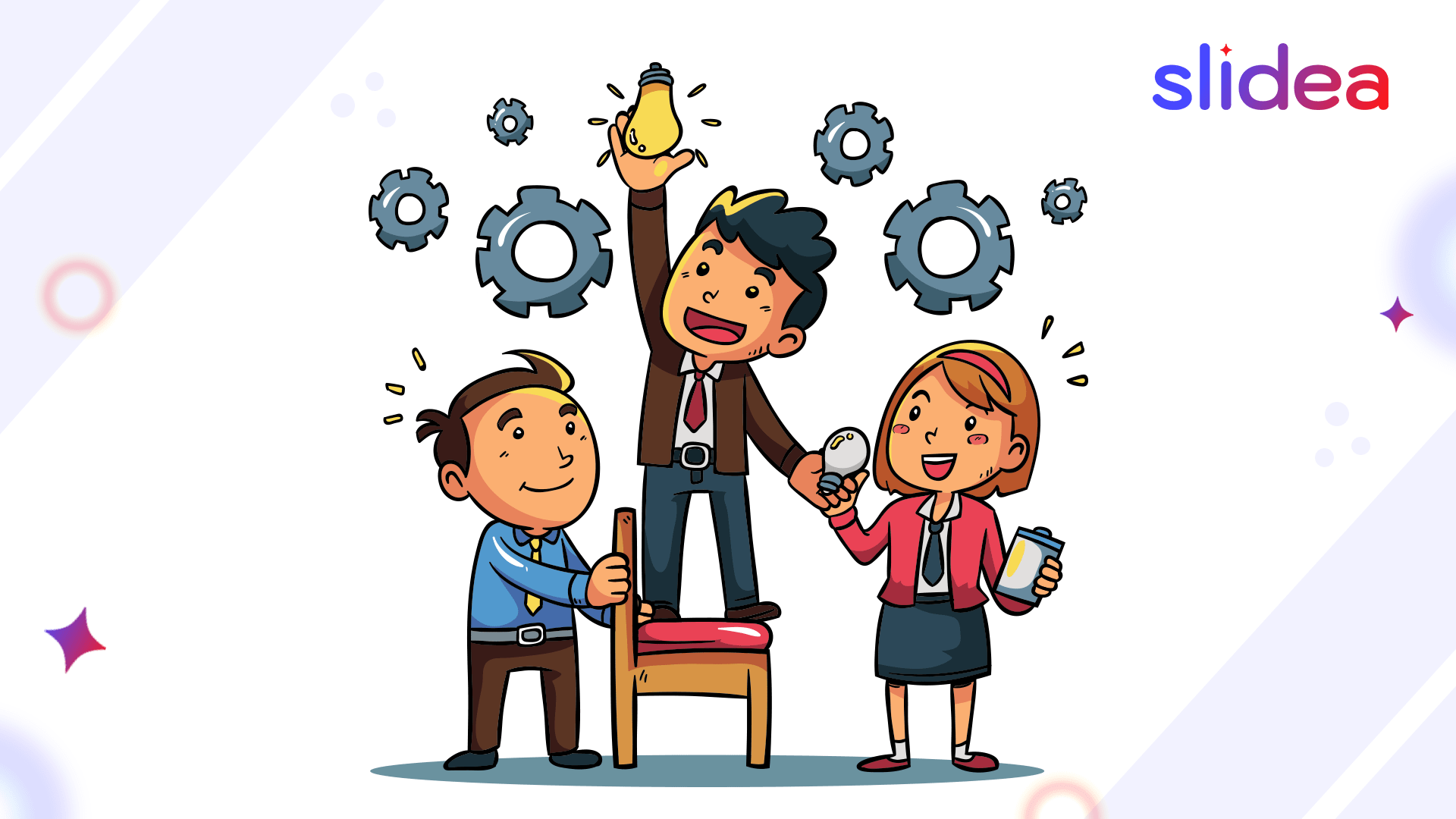Did you know that companies with highly engaged teams are 21% more profitable? That’s not just a lucky coincidence, but teamwork really works. From boosting creativity to solving problems faster, strong collaboration turns average teams into high-performing ones.
And when you combine teamwork with the right tools like interactive presentation software, you unlock better audience engagement, clearer communication, and seamless experiences, especially during virtual meetings and hybrid events.
Let’s break down why teamwork is so powerful, how it shapes real success stories, and how you can strengthen it within your team using practical, modern methods.
What Is Teamwork?
Teamwork means people working together toward a shared goal. It’s not just about splitting tasks. It’s about listening, sharing ideas, solving problems together, and making each other better along the way.
Good teamwork is built on trust, respect, communication, and a common purpose. It doesn’t matter if your team works side by side or from different corners of the world, those values stay the same.
7 Key Benefits of Teamwork
1. Better Problem Solving
Two (or more) minds are always better than one. When people brainstorm together, you get different angles, faster solutions, and smarter decisions.
2. Increased Innovation
Diverse teams bring fresh perspectives. When team members feel safe to share their ideas, innovation flourishes as creativity flows more freely and collaboration leads to unique solutions.
3. Stronger Communication
Teamwork naturally improves how people talk, listen, and share feedback. This reduces misunderstandings and builds better working relationships.
4. Improved Productivity
When tasks are split based on people’s strengths, things get done faster and better. No more duplicated effort or missing pieces.
5. Higher Job Satisfaction
Working in a good team feels good. Supportive colleagues, clear goals, and shared wins create a positive, and motivating vibe.
6. More Learning Opportunities
Teammates learn from each other every day through new skills, new tools, and fresh ways of thinking. It’s like on-the-job training that’s actually enjoyable.
7. Resilience During Challenges
Teams that trust and support each other bounce back faster from setbacks by focusing on solutions instead of blame.
Examples of Teamwork That Made a Difference
NASA’s Apollo 13 Mission
When a life-threatening malfunction hit Apollo 13 in 1970, teamwork saved lives. Engineers, astronauts, and mission control worked together under pressure, using communication and problem-solving to bring the crew home safely.
Apple’s iPhone Development
Designers, engineers, and marketers teamed up to rethink the smartphone. The iPhone’s success came from strong cross-functional collaboration where everyone’s input mattered.
Leicester City’s Championship Win
In 2016, this underdog soccer team shocked the world by winning the English Premier League. Their secret wasn’t just talent, it was teamwork. Every player followed the plan, trusted the process, and played for one another.
Virtual Class Projects
In remote learning setups, students using tools like live polls and group quizzes have managed to collaborate and present ideas just as effectively as in person. It proves teamwork isn’t limited by distance, just strengthened by the right tools.
How to Strengthen Teamwork in Your Day-to-Day
Want better teamwork? Start by improving how your team communicates and collaborates. Here’s how to make teamwork even in remote or hybrid setups:
1. Use Interactive Features with Slidea
Interactive tools like Slidea are game changers when it comes to team engagement. You can make your presentations more collaborative with:
- Live polls to gather instant feedback
- Quizzes to turn learning into fun
- Open-ended questions to collect team ideas
- Word clouds for visual brainstorming
These features don’t just make meetings more fun, they help your team stay focused, express themselves, and align on goals faster.
2. Set Clear Goals Together
Define what success looks like for your team. When everyone’s on the same page about the goal, they move in the same direction with more purpose.
3. Build Trust Daily
Trust isn’t built overnight, it happens in the small things. Celebrate wins, give shoutouts, and show genuine appreciation for each person’s effort.
4. Communicate Visually
During virtual meetings or hybrid events, slides and visuals help clarify ideas. With Slidea’s user-friendly designs and interactive features, you can share updates, priorities, and plans in a way that everyone understands and remembers.
5. Rotate Roles & Responsibilities
Let different team members take turns leading a session, managing a project piece, or presenting results. This boosts confidence, leadership skills, and respect across the team.
Final Thoughts
Teamwork isn’t just nice to have, it’s essential. From historic space missions to everyday office wins, real progress happens when people work together with purpose. And today, building that connection is easier than ever, even across screens and time zones.
FAQs
Q1. Why is teamwork important in the workplace?
It boosts productivity, creativity, communication, and morale helping teams perform better together.
Q2. How can teams improve collaboration remotely?
Use video calls, shared documents, and interactive tools like quizzes or word clouds to stay connected and engaged.
Q3. What makes a good team?
Trust, clear goals, open communication, and shared respect for everyone’s strengths and ideas.
Q4. How does teamwork affect employee engagement?
Strong teams support each other, celebrate wins, and create a positive environment making people more motivated to contribute.
Q5. Can interactive features really help with teamwork?
Yes! Features like live polls, group quizzes, and open Q&As help teams feel heard, involved, and connected, especially during virtual sessions.




Leave a Comment
Your email address will not be published. Required fields are marked *